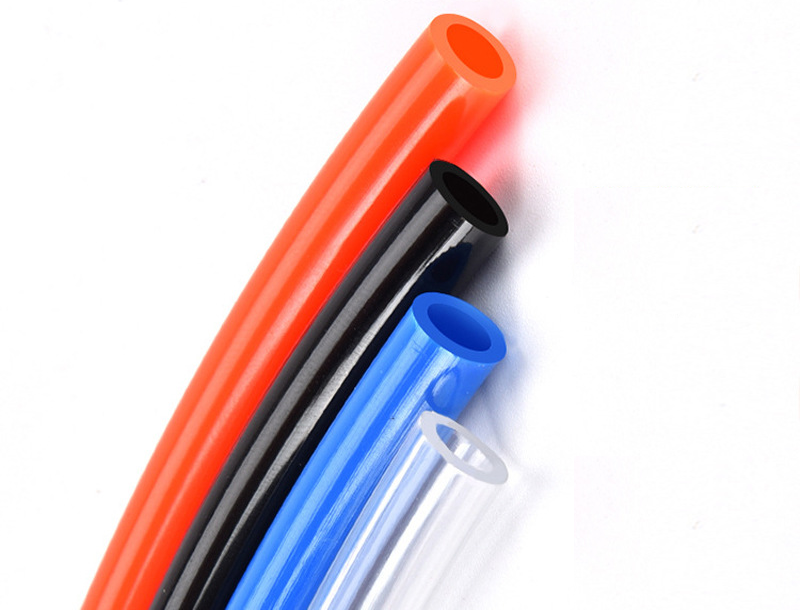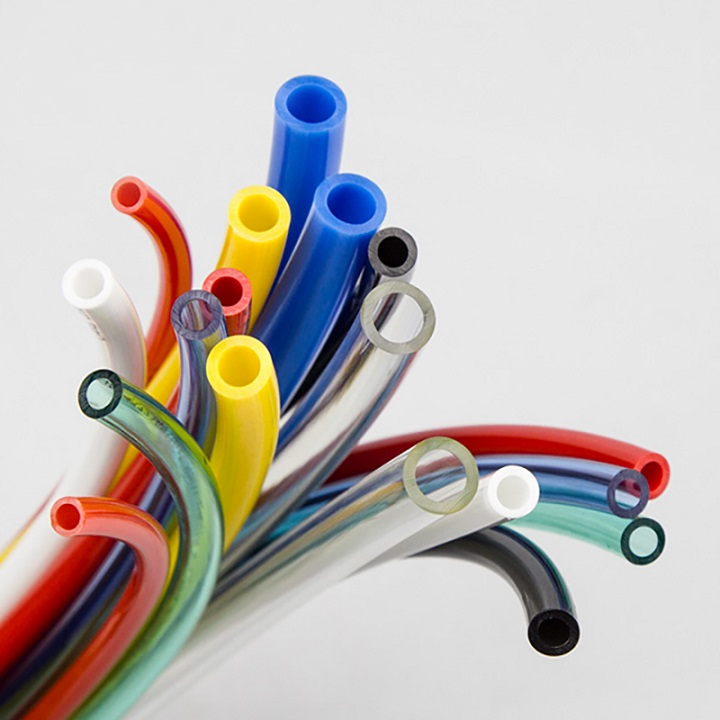In the realm of pneumatic systems, the choice of tubing is paramount to ensuring both safety and efficiency. Among the various options available, Polyurethane (PU) tubing stands out due to its remarkable flexibility, durability, and resistance to wear and tear. However, one of the most critical aspects to consider when working with PU tubing is its maximum pressure rating. Understanding this rating is essential for preventing failures and ensuring optimal performance in your applications. In this article, I will provide a comprehensive overview of PU tubing, its pressure ratings, and practical insights to help you make informed decisions.
Table of Contents
ToggleWhat is PU Tubing?
PU tubing, or Polyurethane tubing, is a type of flexible tubing made from polyurethane, a versatile polymer known for its excellent mechanical properties. Unlike other materials such as nylon or polyethylene (PE), PU tubing offers superior flexibility, allowing it to bend and twist without compromising its integrity. This characteristic makes it ideal for applications that require movement, such as in robotics, automotive systems, and various industrial processes.
The composition of PU tubing typically includes a combination of polyols and isocyanates, which are reacted to form a polymer that exhibits both elasticity and strength. This unique formulation results in a tubing that can withstand a wide range of temperatures and pressures, making it suitable for diverse applications, from air and fluid transfer to pneumatic systems.

Understanding Pressure Ratings
Pressure ratings are critical specifications that indicate the maximum pressure a tubing can safely withstand without failing. These ratings are determined through rigorous testing and are influenced by several factors, including the material properties, wall thickness, and environmental conditions.
Key Factors Influencing Pressure Ratings
- Material Properties: The inherent characteristics of the polyurethane material, such as tensile strength and elasticity, play a significant role in determining the pressure rating. Higher quality PU materials typically exhibit better performance under pressure.
- Wall Thickness: Thicker walls generally provide greater strength and can handle higher pressures. When selecting PU tubing, consider the wall thickness in relation to the expected pressure in your application.
- Temperature: The operating temperature can significantly affect the pressure rating of PU tubing. As temperature increases, the material may become more pliable, potentially reducing its ability to withstand pressure. Conversely, at lower temperatures, the material may become brittle.
- Environmental Conditions: Exposure to chemicals, UV light, and other environmental factors can degrade the material over time, impacting its pressure rating. Always consider the operating environment when selecting PU tubing.
What is the Maximum Pressure for PU Tubing?
The maximum pressure for PU tubing can vary significantly based on its size, wall thickness, and specific formulation. Generally, PU tubing can handle pressures ranging from 80 psi to over 150 psi, depending on these factors.
For example, a standard 1/4-inch PU tube may have a maximum pressure rating of around 100 psi at room temperature. However, as the temperature increases, the pressure rating may decrease. It’s essential to consult the manufacturer’s specifications for the most accurate information regarding the maximum pressure for the specific PU tubing you are using.
Industry Standards
Industry standards, such as those set by the American Society for Testing and Materials (ASTM) and the International Organization for Standardization (ISO), provide guidelines for determining these pressure ratings. These standards ensure that the tubing meets specific safety and performance criteria, giving you confidence in its reliability.

How to Choose the Right PU Tubing for Your Application?
Selecting the right PU tubing involves several considerations to ensure it meets the demands of your specific application. Here are some key factors to keep in mind:
- Assess Pressure Requirements: Determine the maximum pressure your application will experience. Ensure that the tubing you choose can handle this pressure comfortably, factoring in any potential fluctuations.
- Evaluate Flexibility Needs: Depending on your application, you may require tubing that is highly flexible or more rigid. PU tubing is available in various degrees of flexibility, so choose one that aligns with your operational needs.
- Consider Chemical Compatibility: If your application involves exposure to specific chemicals, ensure that the PU tubing is compatible with those substances. Incompatible materials can lead to degradation and failure.
- Temperature Considerations: Be aware of the operating temperature range for your application. Ensure that the selected PU tubing can withstand the expected temperature fluctuations without compromising its integrity.
- Avoid Common Mistakes: One common mistake is underestimating the pressure requirements. Always err on the side of caution and select tubing with a higher pressure rating than you think you’ll need. Additionally, ensure that you are using the correct fittings and connectors to maintain the integrity of the system.
Troubleshooting Common Issues with PU Tubing
Even with the best products, issues can arise. Here are some common problems associated with PU tubing under pressure and how to address them:
1. Leaks
Leaks are one of the most common issues encountered with PU tubing. If you notice any signs of leakage, such as air escaping or fluid dripping, it’s crucial to act quickly. Start by checking the fittings and connections, as these are often the culprits. Ensure that all connections are secure and that the tubing is properly seated in the fittings. If the tubing itself is damaged, it may need to be replaced.
2. Bursts
A burst in the tubing can be catastrophic, leading to system failure and potential safety hazards. If a burst occurs, it’s essential to replace the damaged section of tubing immediately. Investigate the cause of the burst, which could be due to excessive pressure, temperature fluctuations, or improper installation.
3. Wear and Tear
Over time, PU tubing can experience wear and tear, especially in high-friction applications. Regular inspections are vital to identify any signs of degradation, such as cracks, discoloration, or loss of flexibility. If you notice any of these signs, replace the tubing to prevent failures.

Best Practices for Installation and Maintenance
Proper installation and maintenance are key to ensuring that your PU tubing performs well under pressure. Here are some best practices to follow:
Installation Guidelines
- Follow Manufacturer Instructions: Always adhere to the manufacturer’s guidelines for installation, including recommended fittings and connection methods.
- Avoid Sharp Bends: Ensure that the tubing is installed without sharp bends or kinks, as these can create weak points that may fail under pressure.
- Use Appropriate Fittings: Select fittings that are compatible with PU tubing to ensure a secure connection.
Maintenance Tips
- Regular Inspections: Conduct regular inspections of your PU tubing to identify any signs of wear or damage. Look for cracks, discoloration, or loss of flexibility.
- Pressure Testing: Periodically conduct pressure tests to ensure that the tubing is still within safe operating limits. This can help catch potential issues early.
- Replace Damaged Sections: If you identify any damaged sections of tubing, replace them immediately to maintain system integrity.
Conclusion
Understanding the maximum pressure for PU tubing is essential for anyone working with pneumatic systems. By selecting the right tubing, adhering to pressure ratings, and following best practices for installation and maintenance, you can ensure the safety and efficiency of your applications. If you have specific questions or need assistance in choosing the right PU tubing for your needs, don’t hesitate to reach out to experts in the field. At Ideal Bell, we are here to provide you with high-quality PU tubing solutions tailored to your requirements.

